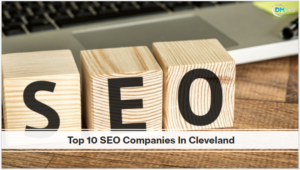Ultimate Technical SEO Checklist You Must Know – Search engine optimization is a critical cog in the wheel that places companies at the top of the list most of the time. Arguably the most crucial technical SEO approach because it focuses on the website structure and coding. Therefore, always check that your site is technically correct and refined in this way to be crawled and indexed better.
Table of Contents
ToggleWhat Is SEO?

SEO stands for Search Engine Optimization, it is a technique used in Marketing to optimize website to increase ranking. SEO on the other hand, has the objective of bolstering the rankings of a website in order to attract higher amounts of traffic that is relevant to the website and more likely to convert.
Search Engine Optimization in short as SEO is the process of making content, the architecture of the webpage, and its design compatible with search engines like Google, Bing, Yahoo, etc., SEO Chicago makes it easier for the search engines to understand that the website has relevant and useful information for the end-user and therefore ranks the site higher when there is a search for similar terms.
Importance Of SEO:

Increased Organic Traffic
The traffic that results from a natural source and comes without any paid promotion is essential for the website. By targeting the right keywords and posting good content, the site can be promoted to the relevant positions in the search engine result pages.
Enhanced User Experience
In general, search engines have great regard for the user’s convenience. There are several SEO best practices such as optimizing the images and files used on the site, making the navigation easy for users, and ensuring the content of the site is relevant to users; they contribute to improved user experience.
Credibility and Trust
Such findings suggest that users are inclined to perceive sites ranked high as credible and trustworthy. Search engines are trusted, so if your website is being shown in the first page, then it earns credibility and authority.
Cost-Effectiveness
However, there is evidence that the long term ROI of SEO is potentially greater than that of other marketing channels, such as pay-per-click advertising. While it may not be easy to achieve this ranking or take some time and resources to achieve the ranking, once a website begins to rank well, it may continue to attract customers whom it does not have to pay to advertise to.
Long-Term Strategy
It is more sustainable than some short-sighted marketing techniques. Here, I’ll explain that SEO can help generate traffic and leads when implemented correctly in the long run.
Competitive Advantage
With the competition intensifying, SEO services Chicago can help them gain a competitive advantage. When you rank higher than your competitor, then you stand a better chance of getting those who are naturally searching for services you are offering.
Adaptation to Search Engine Algorithms
It is common these days to see search engine algorithms are revised from time to time to make them better. With proper SEO techniques, website owners can respond to these changes in a timely manner and remain relevant in the search engine’s results list.
Checklist Of Essential Technical SEO Tips

Here are 15 essential technical SEO points you should know and understand to enhance your website’s visibility.
Site Speed Optimization
As to the more technical aspects, site speed is a good example. People expect web content to appear instantly, thus, search engines use site speed to determine the rank of websites. Some of the techniques that can enhance site speed include image optimization, browser caching, and use of CDN. This can be done with Google PageSpeed Insights and GTmetrix: these tools will shed a light on issues with site speed.
Mobile Responsiveness
You should not underestimate how important it is to make the site friendly to mobile users since they are constantly on the rise. Your website layout should be full HTML so that it can be accessed across any devices and with any browser. Google offers a tool called the Mobile Friendly Test, through which one may check how a certain site works on a mobile device.
XML Sitemap Creation and Submission
XML sitemaps are used by search engines to crawl and index your website easily. When you have a sitemap for your website and submit it to the search engines (for example, Google Search Console), the search engine indexing of your website’s pages will be effective and precise.
Robots.txt Optimization
The Robots.txt file instructs search engine crawlers on what parts of your website should be crawled and indexed. You can prevent duplicate or sensitive content from being indexed while allowing crawlers to access your essential pages by configuring your robots.txt file properly.
Canonicalization
Repeated content is SEO unfriendly. Canonical tag is mostly common whenever there are different versions of the same page. They show the version of a destination page favoured by Google. With a view of ensuring that link equity is not diluted through repetition of same content with slightly altering links, you can use canonical tags.
HTTPS Implementation
Website security is very important to both the users as well as the search engines. A pop up message is sent between Users and servers through the use of HTTPS which helps in code encryption. A site will have a lower rank if their site does not have HTTPS, this is because search engines prioritize sites with HTTPS. Recommend the migration of the site to HTTPS for better security and SEO opportunities.
Structured Data Markup
Markup like Schema that is used to structure the data. org vocabulary, is an added advantage for search engines in as much as it gives them a clue as to what your website is all about. This enhances the chances of people to visit a site by ranking the page with rich snippets or featured snippets.
URL Structure and Optimization
Try to produce URL that would be meaningful and follow a specific pattern in content layout of your website. Short and straightforward keep the URLs and do not include any unnecessary parameters and provide a wordy keyword. Actually, the structure of URLs of your content can be maximized so that users and search spobykers can understand it better.
Mobile-First Indexing
Today, Google mostly targets and ranks the mobile versions of sites, although this process is constantly evolving. Metadata for the mobile versions of your website need to be nearly identical to the metadata for your site’s desktop counterparts. When you design your site for portable devices, make sure to retain your site’s search and content organization of the non-portable site for consistent search relevance.
Pagination Handling
Pagination is crucial for websites with many paginated pages (e.g., e-commerce categories). You can indicate the main page using rel=”next” and rel=”prev” tags. By doing so, search engines will not consider paginated pages to be duplicated, and ranking signals will be consolidated to the primary page.
404 Error Page Optimization
A 404 error page appears when a page on your website cannot be found. Provide user-friendly navigation options on your 404 error page. Well-designed 404 pages can enhance your website’s SEO by assisting users in finding relevant content.
Image Optimization
You can engage users with the right images, but they can also slow down your website if they aren’t optimized. Enhance accessibility and SEO with descriptive alt tags, and speed up page loading with lazy loading. Image sitemaps can help search engines find and index your visual content more effectively.
Hreflang Implementation
You need hreflang tags if you want your website to be translated into multiple languages or regions. A search engine uses these tags to determine whether a page is intended for a particular language or region, preventing duplicate content issues.
Reviewing and Fixing Crawl Errors
Monitor your website’s crawl errors through Google Search Console or another tool regularly. Keep your website healthy and well-indexed by addressing crawl errors promptly, such as broken links.
Monitoring Core Web Vitals
Google’s Core Web Vitals measure user experience. The metrics include loading speed, interactivity, and visual stability. Google uses these metrics in its page experience ranking factor. Core Web Vitals improve your website’s search engine rankings and user experience.
Summing Up
A well-optimized website begins with technical SEO. With these 15 key points in mind, you can ensure that your website is both search engine-friendly and user-friendly. Maintain your website’s visibility and competitiveness in search results by monitoring and adapting to changes in search engine algorithms. These technical SEO best practices will help you achieve online success and increase organic traffic.
FAQs
-
Why should I focus on technical SEO for my website?
Technical SEO ensures that your website is easy for search engines to crawl and index. This boosts your visibility, ranking, and organic traffic. It also enhances user experience, credibility, and offers long-term cost benefits. Keeping up with technical SEO helps you adapt to algorithm changes and stay competitive.
-
How can I improve my website’s loading speed for better SEO?
To improve your website’s loading speed:
- Optimize Images: Compress and resize images.
- Enable Browser Caching: Store static files locally.
- Use a CDN: Distribute content across multiple servers.
- Minimize HTTP Requests: Reduce the number of page elements.







